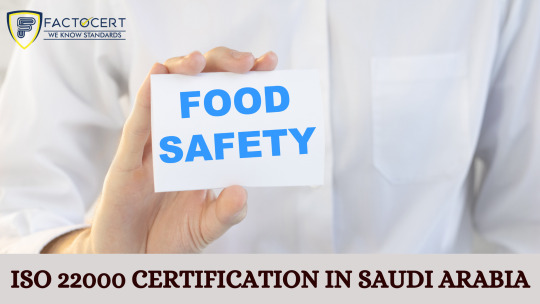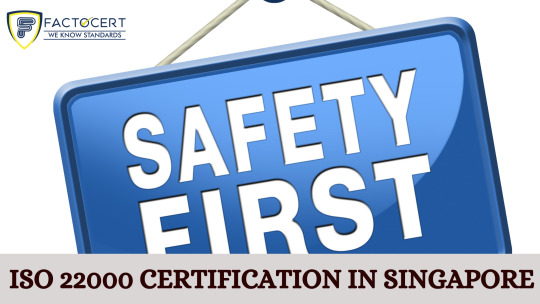#PDCA cycle explained
Explore tagged Tumblr posts
Text
PDCA in ISO 9001: Beyond the Basics – A Practical Perspective
The PDCA (Plan-Do-Check-Act) cycle isn’t just a theory; it’s a strategic engine behind process maturity and continuous improvement in ISO 9001. But most organizations stop at “basic compliance” — and that’s where the real opportunity is lost. Here’s how to actually live the PDCA cycle across your organization. 🧩 1. PLAN: More Than Just Procedure Writing Common Mistake: Organizations confuse…
#Continuous improvement in ISO 9001#Implementing PDCA effectively#ISO 9001 audit preparation#ISO 9001 Continuous Improvement#ISO 9001 implementation guide#ISO 9001 quality management#PDCA cycle explained#PDCA for quality improvement#PDCA in quality management system#PDCA ISO 9001#PDCA methodology in ISO#Plan Do Check Act cycle#Practical PDCA examples#Process approach ISO 9001#Quality management best practices#Real-world PDCA application
0 notes
Text

➡️ PDCA Cycle | Plan Do Check Act Cycle Explained with Examples | How to Implement PDCA
3 notes
·
View notes
Text
Navigation Guide
I function well on organization, and I'm tired of acting like I don't (even if it is hard to stay organized a lot of the time). With that said, I made this guide to make it easier to find specific posts you wish to see.
General Info
Seeing as how this is Tumblr, you'll be seeing a lot of stuff that I like, reblog, or create. I have consolidated my social media outlets into Tumblr to make it easier for me to track and organize my works. I noticed that tagging is a huge thing here on Tumblr (and a friend had to teach me how to use it well LOL). Therefore, posts will have specific tags with their own purpose. This implements the Featured Tags Tumblr has in place.
#colorico Tag
This tag is not included in the Featured Tags for my page.
It's pretty straightforward; it shows what items I personally have posted, versus what has been reblogged or shared. All of my artwork, rants, test posts, etc. will all have this tag. This is so that if you do not wish to see what I reblogged, this will filter those items out.
#colorico sketch Tag
I don't know about you, but I feel that seeing the sketchwork of an artist is just really fascinating. You get to see what laid the groundwork for the finished piece. This tag is to showcase my sketches for those that have a similar mindset.
#colorico art Tag
Can't really say I'm using Tumblr to not showcase my art, so...yeah, this is to put all my artwork front and center. Pretty straightforward, honestly. Artwork showcased will feature other tags (because it's Tumblr, and I want more people to see my work...Sue me, I'm not ashamed to say I want some kind of attention LOL).
#colorico pdca Tag
I am implementing a technique of learning shown by Naoki Saito in his book Fastest Way to Improve Illustration (the book linked is to the English translation he made available). The book explains the 3 Month Improvement Method, which involves the basic principles of the Plan, Do, Check, and Action Cycle commonly seen in other industries. I've been going on and off on this method for some years, but even then I have seen a stark improvement to my work.
TL;DR is that this tag will showcase my thought process of analyzing my works and seeing what can be improved on. Not all pieces will include a breakdown, but more effort will be placed depending on the project that was completed.
#colorico timelapse Tag
I've come across other artists' timelapse pieces, and the process itself makes it easier to see different techniques used (I personally think a live stream is better, but in today's social media climate it's easier to give out small videos compared to hours-long streams).
Additionally, sometimes there's a technique used in one piece that I need a refresher on when handling a different piece. Please be aware that Tumblr doesn't have the easiest time uploading my timelapse videos, so there may not always be a timelapse available. Additionally, I sometimes forget to record the process...
#resources Tag
On occasion, I come across a technique or a program setting that I feel is important to look back on. This is usually art specific, but I'll share anything I feel is personal or important under this tag. Most items will be reblogs, but if there is a particular resource I can share myself, I'll do my best to impart that knowledge as well
2 notes
·
View notes
Text
How Does Employee Training Impact Your ISO 14001 Audit Results?

For organizations that care about environmental management, successfully passing an ISO 14001 audit on the first attempt is a significant achievement. ISO 14001 outlines the steps businesses should take to establish an effective Environmental Management System (EMS) that enables them to reduce their environmental impacts, comply with regulations, and enhance their sustainability. On the other hand, getting ready for the audit may be hard for people who are going through it for the first time.
This blog describes the main processes and tips that help increase your opportunity to pass the ISO 14001 audit on your first try.
1. Understand the ISO 14001 Requirements Thoroughly
It’s important to thoroughly comprehend the standard before proceeding with changes or writing down the procedures. The ISO 14001 standard is based on the PDCA cycle and aims to keep improving over time. Some of its clauses set out regulations on the environment, what is mandatory to follow, how the business is run, assessing risks, and measuring results. Getting to know these will lead you to be better prepared and avoid losing important details.
2. Conduct a Detailed Gap Analysis
Go through your practices to check how they fulfill the requirements of ISO 14001. Find out what strengths and weaknesses the EMS shows. Doing a gap analysis with your team members makes it possible to manage resources well by concentrating on areas that need the most work.
3. Develop Clear Documentation and Records
They will be looking for recent and well-documented environmental policies, goals, operational ways, compliance records, and information on monitoring the company’s performance. Make sure the documents are recent, easy to trace, and comply with the ISO 14001 standards.
4. Engage and Train Your Team
Making employees aware is very important. Make sure everyone in your organization is aware of their parts in the EMS by teaching them to record events, handle emergencies, and follow sustainability measures. Employees’ cooperation and knowledge are necessary during the audit because they may be asked questions.
5. Perform a Thorough Internal Assessment
It is necessary to carry out an internal assessment of ISO 14001 clauses to find any future issues before the external audit by professionals. The internal review ought to be performed thoroughly and should be handled by properly trained team members of your organization. Record every observation, breach of rules, and the way the issue is resolved.
6. Review and Act on Findings
Commonly, use your work from internal audit and management reviews as a basis for improvement. Resolve any issues that do not align with the standard and keep a record of all improvements made. Make sure every step is done and works smoothly before the formal audit date comes.
7. Maintain Compliance Evidence
Most of the work of auditors is based on evidence. You should show compliance with ISO 14001 by preparing audit trails, monitoring records, meeting proof, and documented processes. Strong evidence that is presented every day can help make you more reliable.
8. Stay Calm and Organized During the Audit
When the audit takes place, have your records arranged and easy to reach. Make sure your replies are truthful, and work with the authorities during the whole process. When an issue is found, address it positively and make sure to explain the actions to solve it.
Final Words
Getting certified on an ISO 14001 audit on the first try is possible if you are well prepared. When you grasp the guidelines, work with your staff, and persistently check and improve your EMS, you improve your pass chances as well as help the company for years to come. Preparing, being involved, and keeping things transparent will help you act in a review.
FAQs
Q1: How long does it take to prepare for an ISO 14001 audit?
Development of a roadmap to EMS may take up to 6 months, yet for many organizations, it is roughly 3 to 6 months.
Q2: What will happen if we do not pass the ISO 14001 certification?
In the event of failure, you will get a report of what was found out of standard. You should fix these problems and take part in a follow-up audit to get certified.
Also Read: Is ISO 14001 for small companies necessary? How beneficial is the certification?
0 notes
Text
Plan, Do, Check, Act (PDCA): Your Complete Guide to Continuous Improvement

The Plan, Do, Check, Act (PDCA) cycle, sometimes referred to as the Deming Cycle, is one of the most powerful tools for continuous improvement across various industries. From businesses looking to enhance productivity to teams aiming to streamline their workflows, PDCA offers a structured yet flexible approach to making lasting improvements. This article breaks down each step of the PDCA model and explains how it can drive impactful change. Let's dive into the principles and practical applications of the PDCA cycle.
Why Use the PDCA Cycle?
PDCA is all about constant improvement. It’s a systematic method that promotes iterative progress rather than drastic, disruptive changes. If you're looking to improve efficiency, reduce errors, or increase customer satisfaction, PDCA provides a roadmap to achieve these goals gradually and sustainably.
Step 1: Plan
The Plan stage is where it all begins. Here, you identify the goal, analyze your current processes, and think about what needs to change. This step is critical because a well-laid-out plan provides a solid foundation for the rest of the cycle.
Identify the Problem or Goal: Start by clearly defining what you aim to accomplish. Whether it’s improving customer service or enhancing product quality, pinpointing the objective is essential.
Gather Data and Analyze the Situation: Once you know your objective, gather as much data as possible. This could involve reviewing customer feedback, looking at production stats, or conducting surveys. The more information you have, the better you can understand where improvements are needed.
Develop a Hypothesis or Plan of Action: Based on the data, create a strategy to achieve your objective. Outline the specific steps, resources needed, and potential challenges.
This stage isn’t about perfection; it’s about starting with a realistic and achievable plan.
Step 2: Do
Now that you have a plan, it’s time to put it into action. The Do phase is where theory meets practice. Here, you implement the plan on a small scale. This could mean testing with one team or focusing on one product line. Small-scale implementation allows you to test the waters without risking major disruptions.
Execute the Plan in a Controlled Environment: Implement the change as intended, closely following your plan to ensure accuracy.
Monitor and Collect Data: Track the outcomes as they happen. Observe any immediate effects, and document what works well and what doesn’t.
Stay Flexible: You may need to adjust on the fly. If something isn't working, try to understand why and make minor adjustments as needed. The Do phase is as much about observation as it is about action.
Step 3: Check
The Check stage is where you evaluate the results of your plan. After implementing the change, it’s essential to step back and determine whether it met the objectives.
Analyze Results Against Objectives: Compare the actual results with the goals set during the Plan phase. Did you achieve the expected improvement? Were there any unexpected outcomes?
Identify Successes and Shortcomings: If your objectives were met, note what specifically contributed to that success. If not, dig into why the plan fell short and what could be improved.
Review Data and Adjust Hypothesis: Based on what you learned, you may need to refine your original plan. This feedback loop helps make future PDCA cycles more effective, building a deeper understanding of your processes and their outcomes.
Step 4: Act
In the final Act phase, you take what you’ve learned from the Check step and make it a permanent part of your processes. If the changes achieved positive results, they can be standardized and rolled out on a larger scale. If the results weren’t as expected, the PDCA cycle can start again with the insights gained from the first run-through.
Standardize Successful Changes: Document the successful steps and integrate them into daily workflows. This might mean creating new standard operating procedures (SOPs) or updating training materials.
Consider Long-Term Monitoring: Continuous improvement doesn’t end here. Long-term monitoring will ensure that the implemented changes remain effective over time.
Prepare for the Next Cycle: One of the core ideas behind PDCA is its cyclical nature. Once one issue is resolved, you can begin a new PDCA cycle for other areas in need of improvement.
Real-World Applications of PDCA
The Plan, Do, Check, Act (PDCA) cycle is used across a range of industries due to its simplicity and effectiveness. Let’s explore a few examples:
Manufacturing
In manufacturing, even a small error can lead to costly waste. By using the PDCA cycle, companies can test new production methods or machinery on a small scale before full-scale implementation, minimizing risks and costs.
Healthcare
Healthcare providers often use PDCA to enhance patient safety and care quality. From improving treatment protocols to reducing patient wait times, PDCA helps healthcare teams systematically address issues without compromising patient safety.
Project Management
In project management, the PDCA model supports project teams by helping them streamline their processes. Whether it’s ensuring timely deliveries or managing resources more effectively, project managers use PDCA to identify bottlenecks and improve efficiency.
Advantages of Using PDCA
PDCA is a powerful tool for sustainable growth. Here are some of its major benefits:
Continuous Improvement: The cycle never really ends, allowing for constant enhancement and adjustment.
Low Risk: By testing changes on a small scale, PDCA minimizes risks.
Enhanced Problem Solving: The structured approach makes it easier to understand issues in-depth.
Scalability: The cycle can be applied at any level, from individual tasks to organization-wide projects.
Tips to Make PDCA Work for You
To get the best results from PDCA, keep these tips in mind:
Be Patient: PDCA is not a quick-fix solution. The iterative process takes time but offers more sustainable results.
Involve Your Team: Encourage open communication and collaboration during each step of the cycle.
Stay Data-Driven: PDCA relies on facts. Make sure you collect relevant data at each stage.
Encourage Feedback: Actively seek feedback from all stakeholders to ensure the process is inclusive and comprehensive.
Final Thoughts on PDCA
The Plan, Do, Check, Act (PDCA) model is a tried-and-true approach for continuous improvement. It’s used by companies around the world to drive growth, minimize errors, and optimize processes. Unlike more rigid models, PDCA is adaptable and works well in nearly any context, from corporate environments to personal development.
0 notes
Text
ISO 45001 is the standard for occupational health and safety (OH&S). This internationally recognized standard allows organizations to reduce costs while improving control over health and safety issues. It allows for the integration of management systems with other ISO standards, providing a more effective way to manage multiple systems.
#iso 45001#iso 45001 documents#iso 45001 documents kit#editable iso 45001 documents kit#editable iso 45001 documents#ready to use iso 45001 documents
0 notes
Text
Why to have ISO 45001 Certification in Pretoria

How to Get ISO 45001 Certification in Pretoria
ISO 45001 Certification in Pretoria is significant internationally for occupational health and safety management systems (OHSMS). It gives organizations a framework to enhance worker safety, lessen workplace risks, and create better, more secure working situations. For organizations in Pretoria, attaining ISO 45001 certification in Pretoria is no longer the most effective demonstration of dedication to health and protection; however, it also creates an aggressive issue in a market that increasingly values safety-aware operations.
This guide will walk you through acquiring ISO 45001 certification in Pretoria, highlighting the placement of ISO 45001 Consultants in Pretoria and ISO 45001 Auditors in Pretoria and explaining why Factocert is a notable corporation in your certification goals.
What is ISO 45001 Certification in Pretoria?
ISO 45001 Certification in Pretoria is a globally recognized fashionable that guarantees the necessities for an occupational fitness and protection (OH&S) manipulation system. It is designed to help businesses, no matter duration or enterprise, to proactively enhance their OH&S ordinary overall performance with the valuable resource of:
1. Reducing place-of-job incidents: Implementing ISO 45001 Certification in Pretoria can cause fewer artwork-associated injuries by systematically identifying and addressing functionality dangers.
2. Ensuring criminal compliance: The fashionable enables businesses to observe neighborhood health and safety regulations, fending criminal effects and fostering a safe walking environment.
3. Improving worker morale: Businesses can beautify employee delight and productiveness by prioritizing employee protection, which may be crucial for industrial business enterprise success.
For companies in Pretoria, where occupational safety policies are stringent, attaining ISO 45001 certification in Pretoria clearly signals employees, customers, and stakeholders that the organization’s employer is highly concerned about retaining excessive protection requirements.
Steps to Obtain ISO 45001 Certification in Pretoria
1. Understanding the Requirements
Before starting the certification system, it’s essential to understand the requirements of ISO 45001. The famous is installed throughout the Plan-Do-Check-Act (PDCA) cycle, promoting continuous fitness and safety management improvement. Key factors embody:
Leadership and worker participation: Top managers must reveal a commitment to the device’s OH&S manipulation, and personnel at all stages must be concerned with protection tasks.
Hazard identity and hazard evaluation: The employer needs to be aware of risks, affirm risks, and take steps to eliminate or manage them.
Objectives and making plans: Organizations want to set OH&S goals and broaden plans to reap them, integrating protection into all operations factors.
Operational control: Procedures must be established to manage identified risks, including emergency preparedness and response plans.
Performance assessment: Regular monitoring, measurement, and evaluation of OH&S performance are required to ensure non-stop improvement.
Improvement: The corporation must take corrective action to address non-conformities and usually decorate its OH&S control device.
2. Conducting a Gap Analysis
A gap assessment is the first sensible step towards ISO 45001 certification. This technique entails evaluating your contemporary OH&S practices against the requirements of ISO 45001 to identify areas for improvement. At this stage, it’s virtually beneficial to engage ISO 45001 specialists in Pretoria to offer expert insights and pointers.
3. Developing an Implementation Plan
Based on the findings from the space assessment, you’ll need to develop a more in-depth in-destination plan. This plan should list the stairs required to align day-to-day practices with ISO 45001 Certification in Pretoria, assign responsibilities, set timelines, and allocate belongings. It includes all planning stages, making plans, device buy-in purchase-in, and practical implementation.
4. Training and Awareness
Employee education is an essential factor in the ISO 45001 certification process. Your staff desires to be aware of the ultra-modern OH&S tips and techniques and their roles in retaining a secure place of work. ISO 45001 experts in Pretoria can provide custom-designed education programs to ensure that everybody is conscious of the significance of the OH&S management tool and how to contribute to its fulfillment.
5. Implementing the OH&S Management System
With the plan in place and employees professional, you could start imposing your OH&S control device. This step includes setting new rules, tactics, and controls into practice. Ensure each safety measure is documented and contains information showing compliance with ISO 45001 necessities.
ISO 45001 Consultants in Pretoria
ISO 45001 specialists play a vital role in supporting businesses in collecting certification by supplying expert recommendations, sensible answers, and ongoing help for the duration of the machine. Here’s how ISO 45001 experts in Pretoria let you:
Gap Analysis: Consultants conduct a thorough gap analysis to identify regions that need development, ensuring your corporation meets all ISO 45001 necessities.
Customized Solutions: They develop tailor-made implementation plans that address your specific dreams, supporting you in effectively managing occupational fitness and protection dangers.
Training and Awareness: Consultants provide entire education programs to ensure your employees understand their roles in the OH&S control device.
Documentation Assistance: They assist with the creation and maintenance of vital documentation, collectively with guidelines, strategies, and information that demonstrate compliance with ISO 45001.
Audit Preparation: Consultants prepare you for the certification audit by conducting internal audits and addressing non-conformities.
ISO 45001 Auditors in Pretoria
ISO 45001 auditors are answerable for assessing your corporation’s compliance with the identical vintage and ensuring that your OH&S-manipulated device is powerful. The function of ISO 45001 auditors in Pretoria consists of:
Why Factocert is the Best Provider of ISO 45001 Certification in Pretoria
Factocert is famed for its comprehensive approach to ISO 45001 certification, supplying several offerings that ensure a clean and successful certification device. Here’s why Factocert is the popular choice for companies in Pretoria:
Expertise and Experience: Factocert’s group of ISO 45001 experts and auditors has extensive experience across several industries, ensuring that your company gets professional guidance tailored to your precise goals.
Customized Solutions: Factocert knows that every business enterprise is particular. That is why they provide custom-designed solutions that address your unique occupational health and safety traumatic situations.
End-to-End Support: From preliminary consultation to post-certification assistance, Factocert offers complete offerings that cover every detail of the ISO 45001 certification approach.
Proven Track Record: Factocert has a long history of supporting organizations in Pretoria to acquire ISO 45001 certification, focusing on providing consequences that enhance protection and compliance, ISO 45001 Certification in Bryanston .
Local Knowledge: Factocert’s deep know-how of the nearby regulatory environment in Pretoria guarantees that your OH&S manipulation system complies with all applicable crook hints and requirements.
Advantages of ISO 45001 Certification in Pretoria
Achieving ISO 45001 certification gives numerous blessings to groups in Pretoria, which include:
1. Enhanced Safety Culture: ISO 45001 certification fosters a safety-first culture, wherein all personnel are dedicated to maintaining a steady working environment.
2. Regulatory Compliance: The certification ensures that your company complies with close occupational fitness and safety rules, reducing the hazard of jail results.
3. Reduced Workplace Incidents: Implementing ISO 45001 can cause a significant discount in place of job accidents and injuries, improving the average worker’s well-being.
4. Improved Business Reputation: ISO 45001 certification complements your organization’s reputation as an accountable and protection-aware enterprise, attracting customers and top talent.
5. Operational Efficiency: An adequately completed OH&S management device can improve operational overall performance by reducing downtime and minimizing disruptions caused by place-of-job incidents.
6. Market Competitiveness: Certification can give your company an aggressive edge in the market, particularly when bidding for contracts that prioritize fitness and protection standards, ISO 45001 Certification in Bloemfontein .
Conclusion
Obtaining ISO 45001 certification in Pretoria is a strategic flow that demonstrates your organization’s dedication to occupational health and protection. By following the steps in this guide and leveraging the data of ISO 45001 experts and auditors, you could achieve certification effectively and correctly. Factocert is frequently the top-notch provider of ISO 45001 certification offerings in Pretoria, offering an entire guide and custom-designed solutions that ensure your fulfillment. With ISO 45001 certification, your agency company can enhance safety, ensure compliance, and gain competitive benefits in the marketplace.
Why Choose Factocert for ISO Certification in Pretoria?
Factocert is one of the Top execution and Consultation firms that helps your organization to accommodate the highest quality procedures for your organization. Factocert not merely does the implementation or Consulting part but in addition, it offers third-party audit solutions to the international standards and certification of international standards, ISO 45001 Certification in Cape Town .
Well, seasoned subject expertise who has certified several Organizations that were facing the problems by offering them the one-stop solution according to the requirement of international standards, now they are our happy clients and they have gained 100% satisfaction by the solutions. So if the concept of implementing the International standard comes to mind please do visit our site www.factocert.com we’d be happy to Aid you with fewer ISO Certification cost in South Africa.
For more info: ISO 45001 Certification in Pretoria.
Related Article: Get ISO Consultants
0 notes
Text
Maintaining ISO 45001 Certification: Continuous Improvement Strategies

Introduction
Brief overview of ISO 45001 certification and its importance for occupational health and safety.
Highlight the significance of continuous improvement in maintaining the certification.
State the purpose of the blog: to discuss strategies for continuous improvement and maintaining ISO 45001 Certification in Dubai, UAE.
1. Understanding the Importance of Continuous Improvement
Explanation: Discuss why continuous improvement is crucial for sustaining ISO 45001 certification.
Benefits: Improved safety performance, compliance with evolving regulations, enhanced employee morale, and reduced incidents.
2. Conduct Regular Internal Audits
Challenge: Ensuring ongoing compliance with ISO 45001 standards.
Solution: Schedule regular internal audits to assess the effectiveness of your Occupational Health and Safety Management System (OHSMS).
Provide tips for conducting thorough and effective audits.
Emphasize the importance of identifying non-conformities and areas for improvement.
3. Implement a Plan-Do-Check-Act (PDCA) Cycle
Challenge: Establishing a systematic approach to continuous improvement.
Solution: Use the PDCA cycle to guide your improvement efforts.
Plan: Identify opportunities for improvement and develop action plans.
Do: Implement the action plans.
Check: Monitor and measure the effectiveness of the implemented actions.
Act: Make necessary adjustments and standardize successful improvements.
4. Engage and Train Employees
Challenge: Ensuring employee involvement and understanding of OHSMS.
Solution: Provide regular training and development programs.
Highlight the importance of employee engagement in identifying hazards and suggesting improvements.
Share success stories of how employee involvement has led to significant safety improvements.
5. Monitor and Analyze Safety Performance Data
Challenge: Keeping track of safety performance and identifying trends.
Solution: Establish key performance indicators (KPIs) for health and safety.
Use data analysis tools to monitor trends and identify areas needing attention.
Share examples of effective KPIs and how they can drive improvement.
6. Management Review and Commitment
Challenge: Maintaining top management commitment to OHSMS.
Solution: Conduct regular management reviews to assess the performance of the OHSMS.
Discuss the outcomes of these reviews and how they lead to strategic decisions for improvement.
Highlight the role of leadership in driving a culture of continuous improvement.
7. Foster a Culture of Safety
Challenge: Creating an organizational culture that prioritizes health and safety.
Solution: Promote a safety-first mindset throughout the organization.
Share best practices for fostering a culture of safety, such as recognition programs, open communication channels, and leadership by example.
8. Use Technology and Innovation
Challenge: Keeping up with technological advancements and leveraging them for safety improvements.
Solution: Implement digital tools and technologies for safety management.
Discuss examples of technologies such as safety management software, IoT devices, and data analytics.
Explain how these technologies can streamline processes and enhance safety performance.
9. Stay Updated with Regulatory Changes
Challenge: Adapting to changes in regulations and standards.
Solution: Regularly review and update your OHSMS to comply with new regulations.
Provide resources for staying informed about regulatory changes.
Highlight the importance of proactive compliance to avoid penalties and ensure worker safety.
Conclusion
Recap the key strategies discussed in the blog.
Reinforce the importance of continuous improvement for maintaining ISO 45001 Certification in Dubai, UAE.
Encourage readers to implement these strategies to achieve sustained compliance and improved safety performance.
Call to Action
Invite readers to share their own strategies and experiences with maintaining ISO 45001 certification.
Provide contact information or links for readers seeking professional assistance or more information about ISO 45001 certification.
This outline will help you create a comprehensive and informative blog post that offers valuable insights and practical strategies for maintaining ISO 45001 Certification in Dubai, UAE through continuous improvement.
0 notes
Text
How can Saudi Arabia businesses be informed about the latest updates to ISO 22000 standards?
/ Uncategorized / By Factocert Mysore

What Saudi Arabia Businesses Need to Know
ISO 22000 Certification in Saudi Arabia In the short-evolving world of food protection, staying modern with the cutting-edge requirements and policies is critical for corporations to make certain compliance and hold consumer consider. ISO 22000 certification in Saudi Arabia, the international popular for food protection management systems, underwent big revisions in its 2018 update, which stays the most current model as of now.
ISO 22000 certification in Saudi Arabia These adjustments purpose to decorate meals protection across the supply chain and align the same old extra intently with other ISO control gadget requirements. ISO 22000 certification in Saudi Arabia This weblog will delve into those updates and explain their implications for Saudi Arabia companies.
Overview of ISO 22000:2018
ISO 22000:2018 specifies the necessities for a meals safety management gadget (FSMS) that can be implemented by any company concerned inside the food chain. The popular combines commonly diagnosed key elements to make sure food protection alongside the deliver chain, which include interactive communication, gadget control, prerequisite packages (PRPs), and HACCP principles.
Key Updates in ISO 22000:2018
1.High-Level Structure (HLS)
ISO 22000 certification in Saudi Arabia One of the most great adjustments in ISO 22000:2018 is the adoption of the High-Level Structure (HLS). This shape is now common to all new and revised ISO control system standards. It presents a consistent framework with standardized center textual content, not unusual phrases, and definitions, which simplifies the integration of ISO 22000 certification in Saudi Arabia with different management structures inclusive of ISO 9001 (best management) and ISO 14001 (environmental management).
Implications for Saudi Arabia Businesses: Simplified Integration: Businesses that are already licensed to other ISO standards will discover it less complicated to integrate ISO 22000 certification in Saudi Arabia into their present structures.
Streamlined Processes: ISO 22000 certification in Saudi Arabia The HLS enables in developing a extra streamlined, green control gadget which could manage more than one aspects of organizational management cohesively.
2. Risk-Based Thinking
ISO 22000:2018 places a extra emphasis on chance-based questioning, requiring organizations to become aware of and address dangers and opportunities in their FSMS.
Implications for Saudi Arabia Businesses: ISO 22000 certification in Saudi Arabia
Proactive Approach: Companies will need to adopt a proactive technique to figuring out capability food protection dangers and imposing preventive measures.
Continuous Improvement: ISO 22000 certification in Saudi Arabia Emphasizing threat control leads to non-stop improvement in meals protection practices, making sure ongoing compliance and enhancing average protection.
3. PDCA Cycle on Two Levels
ISO 22000 certification in Saudi Arabia The revised popular applies the Plan-Do-Check-Act (PDCA) cycle at two stages: the organizational level and the operational level. This dual utility guarantees that the control gadget as a whole and its character strategies are constantly stepped forward.
Implications for Saudi Arabia Businesses:
Comprehensive Improvement: Businesses want to ensure that the PDCA cycle is efficiently implemented at each strategic and operational degrees, main to comprehensive enhancements in food protection management.
Enhanced Monitoring: More rigorous monitoring and size of strategies could be required to ensure continuous alignment with food safety goals.
4. Clearer Understanding of Key Concepts
ISO 22000:2018 clarifies and distinguishes among key concepts which includes crucial manipulate points (CCPs), operational prerequisite applications (OPRPs), and prerequisite programs (PRPs).
Implications for Saudi Arabia Businesses:
Enhanced Clarity: Clear differences assist businesses successfully become aware of and manage important manipulate points and operational packages, thereby improving meals safety control.
Better Training: Improved information necessitates better schooling for body of workers to make certain absolutely everyone is on the equal web page concerning meals protection measures.
5. Communication and Documentation
ISO 22000 certification in Saudi Arabia The updated general locations more emphasis on verbal exchange and documentation, making sure that applicable statistics is disseminated throughout the corporation and that facts are meticulously maintained.
Implications for Saudi Arabia Businesses:
Improved Communication: Enhanced conversation protocols help make sure that each one employees are aware about their roles and obligations in preserving food protection.
Robust Documentation: Better documentation practices ensure traceability and responsibility, which are important throughout audits and inspections.
6.Context of the Organization
The new well known requires groups to bear in mind the context in which they perform, which includes inner and external issues which could affect their FSMS.
Implications for Saudi Arabia Businesses:
Holistic View: Businesses want to take a extra holistic view of their operations, thinking about factors including regulatory modifications, marketplace trends, and technological improvements that might impact meals protection.
Strategic Planning: A deeper knowledge of the organizational context aids in strategic making plans and threat control.
Implementation Tips for Saudi Arabia Businesses
1. Conduct a Gap Analysis
Before transitioning to ISO 22000:2018, behavior an opening analysis to discover regions that need updating or development. This enables in planning the essential steps for compliance.
2.Engage Leadership
Ensure pinnacle management is devoted to the changes and is familiar with their roles in selling a subculture of meals safety. Leadership involvement is critical for a hit implementation.
3.Train Your Team
Invest in complete training packages on your workforce to familiarize them with the brand new requirements and make sure they recognize their roles in the updated FSMS.
4. Update Documentation
Revise your documentation to align with the brand new structure and requirements of ISO 22000:2018. This includes regulations, techniques, and records.
5.Enhance Communication
Improve internal conversation channels to make certain records approximately meals protection control is efficiently disseminated and understood across all tiers of the corporation.
6.Monitor and Review
Establish sturdy tracking and evaluate mechanisms to constantly assess the effectiveness of your FSMS and make enhancements as vital.
Conclusion
Staying abreast of the state-of-the-art updates to ISO 22000 certification in Saudi Arabia is important for Saudi Arabia groups worried in the food enterprise. The 2018 revision of the usual introduces significant changes that enhance the integration, clarity, and effectiveness of meals safety control structures.
ISO 22000 certification in Saudi Arabia By understanding and implementing those changes, organizations can not handiest achieve compliance however also improve their operational performance, hazard control, and basic meals safety overall performance. This proactive method no longer only ensures compliance with worldwide standards however additionally enhances customer agree with and opens up new marketplace possibilities.
Why Factocert for ISO 22000 Certification in Saudi Arabia
We provide the best ISO consultants Who are knowledgeable and provide the best solution. And to know how to get ISO certification. Kindly reach us at ISO Certification consultants work according to ISO standards and help organizations implement ISO certification in Saudi Arabia with proper documentation.
For more information, visit ISO 22000 Certification in Saudi Arabia.
Related links:
· ISO certification in Saudi Arabia
· ISO 9001 certification in Saudi Arabia
· ISO 14001 certification in Saudi Arabia
· ISO 45001 certification in Saudi Arabia
· ISO 27001 certification in Saudi Arabia
· ISO 22000 certification in Saudi Arabia
ISO 13485 Certification in Saudi Arabia
RELATED ARTICLE
ISO CONSULTANT IN SAUDI ARABIA
0 notes
Text
What are the latest updates or changes to ISO 22000 standards that Singaporean businesses should be aware of?
/ Uncategorized / By Factocert Mysore

What Singaporean Businesses Need to Know
ISO 22000 Certification in Singapore In the short-evolving world of food protection, staying modern with the cutting-edge requirements and policies is critical for corporations to make certain compliance and hold consumer consider. ISO 22000 certification in Singapore, the international popular for food protection management systems, underwent big revisions in its 2018 update, which stays the most current model as of now.
ISO 22000 certification in Singapore These adjustments purpose to decorate meals protection across the supply chain and align the same old extra intently with other ISO control gadget requirements. ISO 22000 certification in Singapore This weblog will delve into those updates and explain their implications for Singaporean companies.
Overview of ISO 22000:2018
ISO 22000:2018 specifies the necessities for a meals safety management gadget (FSMS) that can be implemented by any company concerned inside the food chain. The popular combines commonly diagnosed key elements to make sure food protection alongside the deliver chain, which include interactive communication, gadget control, prerequisite packages (PRPs), and HACCP principles.
Key Updates in ISO 22000:2018
1.High-Level Structure (HLS)
ISO 22000 certification in Singapore One of the most great adjustments in ISO 22000:2018 is the adoption of the High-Level Structure (HLS). This shape is now common to all new and revised ISO control system standards. It presents a consistent framework with standardized center textual content, not unusual phrases, and definitions, which simplifies the integration of ISO 22000 certification in Singapore with different management structures inclusive of ISO 9001 (best management) and ISO 14001 (environmental management).
Implications for Singaporean Businesses: Simplified Integration: Businesses that are already licensed to other ISO standards will discover it less complicated to integrate ISO 22000 certification in Singapore into their present structures.
Streamlined Processes: ISO 22000 certification in Singapore The HLS enables in developing a extra streamlined, green control gadget which could manage more than one aspects of organizational management cohesively.
2. Risk-Based Thinking
ISO 22000:2018 places a extra emphasis on chance-based questioning, requiring organizations to become aware of and address dangers and opportunities in their FSMS.
Implications for Singaporean Businesses:ISO 22000 certification in Singapore
Proactive Approach: Companies will need to adopt a proactive technique to figuring out capability food protection dangers and imposing preventive measures.
Continuous Improvement: ISO 22000 certification in Singapore Emphasizing threat control leads to non-stop improvement in meals protection practices, making sure ongoing compliance and enhancing average protection.
3. PDCA Cycle on Two Levels
ISO 22000 certification in Singapore The revised popular applies the Plan-Do-Check-Act (PDCA) cycle at two stages: the organizational level and the operational level. This dual utility guarantees that the control gadget as a whole and its character strategies are constantly stepped forward.
Implications for Singaporean Businesses:
Comprehensive Improvement: Businesses want to ensure that the PDCA cycle is efficiently implemented at each strategic and operational degrees, main to comprehensive enhancements in food protection management.
Enhanced Monitoring: More rigorous monitoring and size of strategies could be required to ensure continuous alignment with food safety goals.
4. Clearer Understanding of Key Concepts
ISO 22000:2018 clarifies and distinguishes among key concepts which includes crucial manipulate points (CCPs), operational prerequisite applications (OPRPs), and prerequisite programs (PRPs).
Implications for Singaporean Businesses:
Enhanced Clarity: Clear differences assist businesses successfully become aware of and manage important manipulate points and operational packages, thereby improving meals safety control.
Better Training: Improved information necessitates better schooling for body of workers to make certain absolutely everyone is on the equal web page concerning meals protection measures.
5. Communication and Documentation
ISO 22000 certification in Singapore The updated general locations more emphasis on verbal exchange and documentation, making sure that applicable statistics is disseminated throughout the corporation and that facts are meticulously maintained.
Implications for Singaporean Businesses:
Improved Communication: Enhanced conversation protocols help make sure that each one employees are aware about their roles and obligations in preserving food protection.
Robust Documentation: Better documentation practices ensure traceability and responsibility, which are important throughout audits and inspections.
6.Context of the Organization
The new well known requires groups to bear in mind the context in which they perform, which includes inner and external issues which could affect their FSMS.
Implications for Singaporean Businesses:
Holistic View: Businesses want to take a extra holistic view of their operations, thinking about factors including regulatory modifications, marketplace trends, and technological improvements that might impact meals protection.
Strategic Planning:A deeper knowledge of the organizational context aids in strategic making plans and threat control.
Implementation Tips for Singaporean Businesses
1. Conduct a Gap Analysis
Before transitioning to ISO 22000:2018, behavior an opening analysis to discover regions that need updating or development. This enables in planning the essential steps for compliance.
2.Engage Leadership
Ensure pinnacle management is devoted to the changes and is familiar with their roles in selling a subculture of meals safety. Leadership involvement is critical for a hit implementation.
3.Train Your Team
Invest in complete training packages on your workforce to familiarize them with the brand new requirements and make sure they recognize their roles in the updated FSMS.
4. Update Documentation
Revise your documentation to align with the brand new structure and requirements of ISO 22000:2018. This includes regulations, techniques, and records.
5.Enhance Communication
Improve internal conversation channels to make certain records approximately meals protection control is efficiently disseminated and understood across all tiers of the corporation.
6.Monitor and Review
Establish sturdy tracking and evaluate mechanisms to constantly assess the effectiveness of your FSMS and make enhancements as vital.
Conclusion
Staying abreast of the state-of-the-art updates to ISO 22000 certification in Singapore is important for Singaporean groups worried in the food enterprise. The 2018 revision of the usual introduces significant changes that enhance the integration, clarity, and effectiveness of meals safety control structures.
ISO 22000 certification in Singapore By understanding and implementing those changes, organizations can not handiest achieve compliance however also improve their operational performance, hazard control, and basic meals safety overall performance. This proactive method no longer only ensures compliance with worldwide standards however additionally enhances customer agree with and opens up new marketplace possibilities.
Why Factocert for ISO 22000 Certification in Singapore
We provide the best ISO consultants Who are knowledgeable and provide the best solution. And to know how to get ISO certification. Kindly reach us at ISO Certification consultants work according to ISO standards and help organizations implement ISO certification in Singapore with proper documentation.
For more information, visit ISO 22000 Certification in Singapore.
Related Links
ISO Certification in Singapore
ISO 9001 Certification in Singapore
ISO 14001 Certification in Singapore
ISO 45001 Certification in Singapore
ISO 27001 Certification in Singapore
ISO 22000 Certification in Singapore
ISO 13485 Certification in Singapore
RELATED ARTICLE
ISO CONSULTANT IN SINGAPORE
0 notes
Text

➡️ PDCA Cycle | Plan Do Check Act Cycle Explained with Examples | How to Implement PDCA
0 notes
Text
Key Components of a Robust ISO 13485 Quality Management System

In the dynamic and exceptionally managed scene of the medical devices industry, keeping an elevated degree of product quality is the principal to guarantee patient security. The ISO 13485 standard fills in as a foundation for organizations that participated in the planning, improvement, and assembling of medical devices. A basic part of compliance with ISO 13485 is the foundation of a vigorous Quality Management System (QMS).
This article dives into the fundamental parts that comprise serious areas of strength for a ISO 13485 Certification in UAE, underlining their importance in gathering administrative prerequisites and encouraging a culture of value inside organizations.
Key Components of ISO 13485 Standard
Keeping a Quality Management System (QMS) is the establishment to show service compliance in the medical devices industry. QMS is an organized arrangement of techniques and processes, covering all parts of the configuration, fabricating, risk management, provider management, objection dealing with, medical information, stockpiling, dissemination, and product naming of medical devices. To meet the thorough QMS requirements, there is a need to adjust to the ISO 13485 worldwide principles.
Gotten from the globally perceived and acknowledged ISO 9000 quality management standard series, ISO 13485 Certification in Dubai is an independent QMS standard, which is a viable answer for measuring the safety and viability of medical devices and meeting the connected service prerequisites. How do we line up with the ISO 13485 standard? What are its key components? How about we dive into the subtleties?
1. Scope of Plan: It portrays the reason and utilization of the standard and characterizes the scope of hazard management practices for every one of the items inside the risk management plan. The extent of the planning ought to include:
Characterizing the QMS and product
Portraying the expected utilization of the item
Explaining the motivation behind the risk management process and reference related SOPs for formal risk management inside the organization
2. QMS: This segment frames the general and documentation prerequisites of a medical device, which incorporates, the Quality Manual, Report Control, Medical Device Record, and Control of Records. The best practice for dealing with a QMS is persistent observing of its viability, by laying out key execution pointers for the processes inside the QMS. This can be accomplished by applying the Deming Cycle strategy, which incorporates, Plan-Do-Check-Act (PDCA) components.
A quality manual incorporates portraying the extent of your QMS, posting the QMS methodology, depicting the collaborations of ISO 13485 Quality Management System processes, and illustrating the construction of QMS documentation.
Archive control incorporates investigating and supporting records before use, reexamining the reports recognizing the progressions, and guaranteeing that the ongoing forms are accessible, where required.
A medical record ought to comprise the portrayal of the item and its expected use, item naming and directions for use, item determinations, details and strategies for assembling, marking, bundling, capacity, taking care of, dissemination and examination, particulars for estimating and checking and particulars and methodology for item establishment and overhauling, if pertinent.
Control of records incorporates keeping up with the honesty of records and laying out the methods for the support of archives and records.
3. Management Responsibility: In this segment, the top management of each and every organization is expected to be instrumental in carrying out and keeping up with the QMS. Each individual from the organization probably characterized jobs and responsibilities regarding making due, performing, and confirming the ISO 13485 Certification in UAE. It incorporates QMS arranging, quality approach, obligation, authority and correspondence, and management survey.
4. Resource Management: To maintain an effective business and regarding QMS, it is critical to have proficient assets, which incorporate, individuals, framework, processes, workplace, HR, and pollution control. Regardless of how you execute and convey your QMS, the absence of the right resources will hamper your QMS compliance.
5. Product Realization: This part portrays every one of the perspectives expected to understand a product, right from arranging, planning, and assembling to executing and supporting the improvement of a medical device. It incorporates arranging, client-related processes, planning and advancement, buying, creation and administration arrangement, and control of checking and estimating gear.
6. Measurement, Analysis, and Improvement: To keep up with the QMS and screen legitimate working of QMS, this part should incorporate surveying consumer loyalty, unfavorable occasions taking care, internal audit, observing and estimation of items and processes, information examination and Remedial And Preventive Activities (CAPA).
From now on, medical device makers should line up with the previously mentioned key components to accomplish QMS compliance and guarantee the quality, safety, and proficiency of a medical device. While keeping up with the right QMS, to stay away from the difficulties presented by the ISO 13485 principles, reach out to a regulatory consultant. Remain informed. Remain consistent!
Conclusion:
A hearty ISO 13485 Certification in UAE is instrumental in guaranteeing the quality, security, and compliance of medical devices. Via cautiously tending to key parts, for example, record control, management obligation, risk management, resource management, item acknowledgment, marking and estimation, and restorative and preventive activities, organizations can explore the complex administrative scene while encouraging a culture of value and nonstop improvement.
Putting resources into a solid QMS meets management prerequisites as well as upgrades in general functional proficiency and customer loyalty in the cutthroat domain of the medical device industry.
#ISO 13485 Certification in UAE#ISO 13485 Certification in Dubai#ISO 13485 Quality Management System
0 notes
Photo










Digimon Adventure Relationship Analysis Part II: Opposites attract - or clash? Where Koushirou and Mimi work best (I), where they are not compatible with each other and where canon missed a lot of opportunities for them (II).
The first part of this analysis has focused on how Koumi complement each other and work out in the best case scenario. The following points will address where they don’t really work out well (either because of their personalities or due to inconsistency issues). By the end, I will also take a personal and very opinionated look on how I feel Tri especially could have handled them a bit differently.
Where they clash.
They have opposing priority and approach systems - and tend to be incredibly stubborn about it.
As much as their opposing personalities may have helped them to see things in a different light, there have been several set-backs for them to actually get there - or rather, not fall back into old behavioural patterns. Koushirou can definitely act when the situation requires it, but still does prefer to go through the entire PDCA cycle more rationally, planning, doing, checking, acting - whereas Mimi is more prone to skip the first three steps, using more emotionally based judgment. He focuses on rational problem solving, she focuses on the (emotional) effect the problems have on people. And that’s where things can get uncomfortable when neither of them is capable of backing off. (Mimi is a lot more forgiving when Sora displays the same thorough attitude, as she herself is also a planner, while Mimi follows her heart and intuition more frequently.)
So when Mimi finds Koushirou sitting in an old ruin to analyze data, refusing to leave the place, she gets overwhelmed and frustrated, running into a maze, gushing over how much it bothers her that he’s been ignoring and not considering her... She is making a very valid point about that it’s more important to look for the others instead of sitting around analyzing glyphs on a wall - Koushirou however argues that figuring this out might help them (and Mimi in particular!) longterm. So on one hand, he gets stuck in research mode for the sake of being helpful (in his own way), on the other, he disregards her approach, since it doesn’t seem feasible to him. He doesn’t understand Mimi’s self-preserving attitude, because it appears to him as if she’s acting without taking the circumstances into consideration. So Tentomon, who is keeping Mimi’s company, keeps explaining to her that his partner is actually a good guy who just gets lost in the things he is interested in, not meaning to be disregarding.






In this scenario, Koushirou does end up to be the knight in shining armor who does whatever it takes to save Mimi, showing her that he actually isn’t an ignorant jerk. This was when they were 10 years old - and while Koushirou has been getting overwhelmed by Mimi’s demeanour here, he’s definitely becoming much more assertive 6 years later, which is where the “getting more vocal with age” part - and the setbacks - come into play: In Tri, he straight up tells her that, while she acted out of good intentions, her approach to just go and fight Ogremon, causing innocent civilians to get hurt, was very selfish and that she should have followed his instructions instead.





Sadly, that won’t be their last fight. In this, Koushirou is completely incapable of changing perspective and acknowledging her side of things due to the urgency of the situation (also note that none of the others, except Sora, tries to cut in between them or picks an obvious side). And since she’s exactly the same, they keep aggravating each other.






Once at odds, they have difficulties addressing them - Koushirou doesn’t acknowledge personal problems, Mimi deflects and they both struggle to admit that the other may have had a point (Tri only).
As portrayed above, Tri likes to put the two of them on opposing ends, mind vs. heart, rational thought vs. empathy, in a very blatant manner. The problem here - and I will elaborate on this in the “missed opportunities” part - is that they don’t reconcile. At least not on screen. Koushirou, whenever confronted with a personal issue, deflects (”You seem rather lively, Jyou-san”) and Mimi, while being implied to understand Koushirou’s intentions, isn’t able to talk about it in front of him either. While it’s easy for her to address her general self-doubts in front of Jyou, she very much deflects as well when it comes to the argument with Koushirou.
When Taichi explains to Meiko that Koushirou is investigating the infection issue with all of his heart (after he had been the one interrogating her tactlessly about Meicoomon while she was visibly stressed), Meiko says she feels like she should apologize to Koushirou. Mimi, however, interrupts Taichi, saying “she already knows!” - which can be easily read as her actually talking about herself as well there.



Different energy levels.
Despite the conflicts Tri puts them through, the second most famous interaction between them is probably during Diablomon Strikes Back; Mimi is traveling back from America to Japan to help the gang fight against their new-old enemy. When she arrives at Koushirou’s “office”, he’s the only one there - and while she’s super enthusiastic about being back, he’s already exhausted due to the whole (very stressful, very urgent) situation and his lack of reciprocated joy visibly annoys her. This is mainly played for comic relief, but definitely shows that there is a point to them having different energy levels that - as highlighted above several times - may make their arguments additionally difficult, when he cannot deal with her active dominance (extrovert) while she cannot deal with his passive overanalyzing (introvert).





Missed opportunities: the crush and how it was handled.
Koushirou’s contrasting behaviour - turning into “recycled” conflict.
One of the main problems in Tri is the way certain plot elements are being handled inconsistently - and, on a very personal note, it feels like they didn’t really seem to know how they wanted the relationship between Koushirou and Mimi to play out. Choosing to make him obviously crush on her in text shouldn’t be too surprising, since Koumi has quite a big fanbase and, based on the positive aspects mentioned above, it could have been a nice way to showcase how far they had come - from being at odds in their primary episode in 01 due to her differences, to Koushirou becoming more considerate of her emotions, to them praising and inspiring each other and communicating on a regular basis via electronic devices. It could have made sense to make the guy, who still tended to have his moments of ignorance towards her two years prior in Diablomon Strikes Back, realize that the girl he’s been in touch with for so long was not only a great friend who complements him nicely, but also potentially more than that. However, to some degree, it did feel like it was mainly played for comic relief reasons and not for the sake of it being intertwined in his/their character development.
Like it was mentioned above, it’s always Mimi who is vocal about thinking that Koushirou is great - but we never really hear what he values about her, besides the praise in the PSP game (and the supportive attitude in the stageplay). Sure, he acknowledges in 01 that acting can be better in some cases - but that doesn’t mean anything if characters like Taichi and Sora also enable him to act or if he completely forgets this lesson he learned a few years later. Instead, Koushirou’s crush on her seems to be mainly based on her looks/cuteness, resulting in a lot of blushing, stammering and over-the-top-shots - and acting in ways he usually wouldn’t, whether it’s irrationally, or even somewhat obediently. She seems to be mildly aware of it - and doesn’t treat him any differently from before because of it, despite the moments of teasing. (Which is interesting, considering how non-canon-material like the Love Letter Drama poked fun at the idea of her thinking that he may be in love with her already, even though that was played for laughs and never confirmed to be true or false. In contrast, she seemed rather annoyed at the idea that the love letter he had written wasn’t for her, playing into the more popular fandom interpretation of her actually crushing on him, trying to get his attention and affection, just like in Diablomon Strikes Back. Her feelings for him in Tri are portrayed to be platonic - going so far as to outright making her state that she doesn’t have a crush on anybody in the stageplay).


Whenever things are not at stake, they are the friends they had already been previously, being on good terms. Nevertheless, between him not being able to function around her due to his crush - even though he had been mostly comfortable around her prior to Tri - and them being friends fighting Digimon alongside each other, the constant fighting with each other and lack of communication seems a bit jarring. Conflict is important and Koushirou being able to assert his opinion towards Mimi is also a good sign of him opening up - but every conflict has to have a proper resolution for the parties involved.
The “being rational vs. being emotional” conflict between them outlined above is the same thing we’ve seen since episode 10 of Adventure 01, this time dialed up to 11. And while this could have been a great opportunity for them to talk things out, probably even re-addressing and processing what had happened back then, they never do that - they don’t have heart-to-hearts on screen, they don’t address the issue, they don’t make up, they just let it fade out.
When Koushirou tries to prevent the Digimon from getting infected, overworking himself, it’s him shouting at Mimi for not being focused enough and her shouting back about being inconsiderate towards Meiko. They’re both, once again, clearly overwhelmed with the situation and display the old arguments all over again. This time, Koushirou doesn’t stand up to tear a wall down - instead, he isolates himself and eventually tries to find a fix to see their partners again after the reboot. Mimi is seen coming to his office to clean up - but doing so silently. He doesn’t even seem to acknowledge her being there. Visibly, they’re unable to understand the other’s needs and cannot move towards each other - and it’s a shame, because Koushirou may have needed a wake-up-call at this point in time badly. In subtext, it does leave a lot of room for interpretation; maybe she is aware that she can’t stop him anyway because she knows how he is, maybe she doesn’t talk to him because she just understands where he’s coming from, maybe he did tell her on the phone how important all of it is to him. And maybe they did reconcile off screen - we don’t know, because their relationship development is not a focus in either his or her arc. It’s a minor side plot device.




In the end, it does feel like the writers wanted to play it safe, not confirming or denying any relationship happening that didn’t exist in the epilogue - this is obviously just speculation though.
How “fashion and identity” could have been their greatest bonding opportunity in Tri.
Referring back to him “acting in ways he usually wouldn’t”, the biggest missed opportunity in regards of their relationship is that they made fashion a huge plot point for both of them in the first and Tri second movie - and never did anything with it. He confirms that his mother used to pick the clothes for him and that he now wants to figure out his own style, creating an app to generate outfits for himself. So far, so good. Unfortunately, this results in a lot of “the nerd doesn’t know how to dress” trope moments, giving him hideous outfits throughout the first two movies. Takeru wonders where this sudden interest in fashion comes from and concludes that it’s because Koushirou wants to do it for Mimi - Koushirou doesn’t confirm or deny it, but blushes heavily, picks a yukata because she said so and turns up in a suit during the school festival once he knows she’s there. For someone whose initial plot point in 01 was that he wanted to know and accept himself for who he was, dealing with a lot of internal self-doubt, thinking that he hid himself behind his computer in order not to show his true self, figuring out his fashion sense by himself COULD have been a great development trigger for him - but it feels a bit more like he’s bending over backwards just to impress Mimi.
Mimi on the other hand deals with her classmates calling her self-centered because she decided on doing a date café for the school festival all by herself, making Meiko and Sora design a very revealing outfit the other girls don’t feel comfortable with. It’s where her own moment of self-reflection starts about her own stubborness and dominance - in front of Jyou, causing the both of them to have a wonderfully open, vulnerable bonding moment.





It could have been a great plot point to make Koushirou and Mimi interact as well, because they both tend to not see those around them - but it’s not utilized.




He asks her how she felt about his outfit at the school festival - she says it’s alright, when she just could easily have projected onto him. She could have told him that it didn’t matter what he wore as long as he himself felt comfortable with it, realizing that this was what she herself had been about all along. That impressing others and changing for their sake isn’t what either of them are about. (Maybe there could even have been a scene implying that Mimi and Sora were giving Koushirou general advice in finding his personal fashion sense, instead of him relying on an app to “tell him” what to do.)
Additionally, he also could have been given a moment to reassure her in the same way Jyou did by telling her that she was fine the way she was, even if they would sometimes end up butting heads because of it again - maybe it would even have enabled both of them to find a compromise in the middle. Instead, they made him call her self-centered at a point as well, putting him in the same category as her classmates, without facing the issue at hand - that, after all this time, they both still are oddballs who are easily misunderstood by others and whose greatest strengths are coming out when they come together.
It’s why their stageplay portrayal works so well - it’s not known if his crush on her exists in there or not, but it doesn’t matter because they still maintain a lot of things that make them great. Besides the mutual teasing - and the obviously still existing different energy levels, displaying Mimi as much more dominant than him -, they’re a good team. She makes him leave his laptop at home - which can be read as somewhat obedient behaviour, but it also shows that, while he’s still trying to approach the camp idea more rationally than her, he’s not stubbornly insisting on his own positions and is able to listen to her. (Even if not bringing stuff to camp like she suggested does cause trouble for the group, they eventually work together to find a solution - as they should.)
He can be very much an oblivious dork in there as much as she can be an overly-enthusiastic ditz - but they also seem to enjoy spending time at camp together, reading in the guidebook, doing dishes together, thinking about their futures out loud, worrying about and supporting each other and generally not minding physical closeness.
It’s also why Kizuna/To Sora almost feels like they just went from 02 to the stageplay and skipped over Tri to get to a point where they’re, once again, on good, mutually supportive and appreciative terms, helping each other out. Because that’s where their development would definitely have taken them naturally if they communicated properly.
#koumi#koushirou izumi#koushiro izumi#mimi tachikawa#my two cents#meta#digimon#digimon adventure#well this escalated quickly
30 notes
·
View notes
Link
EAS does various ISO Lead Auditor Training Programs with real time trainers as faculties.The experienced EAS Trainers control you through the whole Audit process, from starting the review through to leading audit catch up with this International Register of Certificated Auditors (IRCA) certified Lead Auditor course.
IRCA ISO Lead Auditor training program is 40hr that is its for 5 days, you’ll create reviewing abilities through a parity of formal classroom instructional exercises, handy pretending, aggregate workshops, open gathering dialogs with a composed examination on your last day.
Who are eligible to take part?
Quality experts keen on leading first-party, second-party, or potentially third party audits
Management Representatives
Quality Representatives
Managers
Consultants
EAS make sure that the contribution of the trainer to convey the substance and the style of introduction with genuine models is stunning.
What will I realize?
Information – You will have the capacity to portray the reason for:
of various standard principles
of administration framework review
of outsider confirmation.
Explain the job of an employ to design, direct, report and follow up a standard review as per standard criteria.
Abilities – You will take in the aptitudes to:
Plan
Conduct
Report
Before going to you will be relied upon to have:
Knowledge of the accompanying quality administration standards and ideas:
The Plan, Do, Check, Act (PDCA) cycle
The connection between all stream organizations administration and consumer loyalty
Commonly utilized administration terms and definitions o The process approach utilized in quality administration
The Model of various Process Based Management System
It will encourage your learning on the off chance that you have past administration framework evaluating knowledge e.g. internal evaluating. In practical if you are worried that you don’t have the essential information, if you don’t mind contact EAS who can encourage you.
In what manner wills my association advantage?
Your organization will have the capacity to check its conformance with the prerequisites
Your business will have in-house learning and aptitudes to attempt and lead a quality administration frameworks review at a provider/subcontractor
What’s incorporated?
A duplicate of the standard copy
Certificate of participation
Training course notes
Lunch
Refreshments
Course Folder
Pen Notepad
This course is affirmed by the International Register of Certificated Auditors (IRCA) and meets the preparation prerequisites for IRCA Management Systems Auditor Certification criterias
ISO Online Internal Auditor training courses
If you want to complete an Internal Auditor course, before taking up this lead Auditor course, you can try our ‘online Internal Auditor Training course’. This can be a better way to equip yourself for an Lead Auditor course. Our online Internal Auditor training courses are designed to suit various aspiring candidates of different background for almost every scheme. This is suited to individuals that require a more essential comprehension of standards and have less time to spare to come and attend in a classroom.
#Iso training providers in the Egypt#Iso training courses Egypt#Iso training Egypt#Iso lead auditor training Egypt
1 note
·
View note
Text
6 Steps to Make Successful Marketing Decisions with Data Analysis
The more complex the market conditions become, the more companies face challenges when it comes to marketing decisions. The establishment of a support system for scientific marketing data is an important basis for securing the scientific decisions of the company. In this article, marketing decisions are analyzed in detail from the perspective of data analysis. This includes six modules: indicator decomposition, management cockpit, marketing KPI system, dealer and branch management, product analysis competition and forecast analysis. Planning and organization of corporate marketing decision analysis surface degradation
1. Indicator Decomposition
1.1 Indicator
There are many ways to break down marketing decision indicators. The focus here is on two cores: business and operations modules.
The business module includes metrics for the entire marketing process such as sales, orders, contracts, deliveries and returns, as well as front-end and terminal metrics for business processes such as product prices, inventory and customer satisfaction. Market share.
The operating module contains relevant analytical indicators such as people, channels, costs and forecasts in relation to the marketing process. Requirements or media to achieve business processes and implementation results.
The specific displays are shown in the following illustration.
1.2 Dimension
If there are indicators, there is a basis for the analysis. You then need to choose the appropriate dimensions and methods to analyze these metrics. By combining dimensions, you can not only master data analysis tasks faster, but also support IT staff in data warehouse modeling during implementation. The analytical dimensions commonly used in marketing decision analysis are department (headquarters, different business areas, etc.), region (south, north, etc.), category (product category), series (product breakdown), and channel. (Dealers, direct sales, agents, etc.), customers (usually important levels), time (days, months, quarters, years, etc.) and some custom dimensions within the company
1.3 Method
The indicator is expressed in a particular dimension, and the choice of expression method includes an analysis method.
The analysis methods commonly used in marketing systems are accumulation, percentage, ranking, comparison, trend and average. The information in analysis reports created with other analysis methods is different. In the early stages of requirements assessment and business logic communication, you need to decide how you want to analyze. It is only half the effort to double the results and the results are significant.
After defining the key indicators, the following decision analysis modules are planned, including five: management cockpit, marketing KPI system, dealer and branch management, product analysis competition and forecast analysis. The dimensions and analysis methods are based on the analysis purposes of other modules. The content of each module is explained in detail below.
2. Management Cockpit
Management cockpits have been proposed for marketing managers. The aim is to get an overview of the entire marketing and the most important metrics in real time. Typical drilling analysis with multiple indices and multi-dimensional connections.
Based on the business and operational metrics mentioned above, you can generate the following dashboard reports:
2.1 Dashboard of Marketing Real-time Operations
In order to get a marketing overview in real time, it is more intuitive and clearer to display data at regional level using heat maps. List your local top spots and use competitive pressure to increase your business value. The ratio of each category is to understand the sell-through rate. Key indicators can be displayed in dashboards or values. Detailed data can be provided in the form of connections or holes. Best to drill. Too many elements on the page can cause fatigue.
2.2 Report of Production, Sales, and Inventory
The basis of marketing is the balance between production, sales and inventory. Should not be sold or oversupplied. Compare online production quantities with finished product and sales quantities, monitor start and end stocks, set warning lines for the inventory and forecast inventory failure risks and backlog times. To achieve a good PDCA cycle (plan, review, and execute), it is best to find the department or person in charge and report the abnormal data to your manager.
2.3 Comparison of Reality and Prediction
In marketing activities, the key indicators are sales, cost of sales, costs, and sales. The following case diagram shows the analysis values. If you compare your monthly budget with the actual value, you will get an idea of the accuracy of your forecasting measures. For example, the net interest rate forecast for June was too low because no cost growth was forecast for June. We continued to research the data for analysis and found that the company can add many people. The reason for the inaccurate prediction may be that the exchange of information between workers and financial staff differs so that the problem can be solved in a targeted manner.
2.4 Report of Monthly Key Indicators Overview
A cockpit of a business summary and a transaction summary is required. List some key operational metrics that executives focus on in a variety of ways, including dealer ranking, local sales revenue ranking, net profit trends, and overall goals.
3. Marketing KPI System
In marketing, the efficiency, input and output of employees are more important. Therefore, you need to create a complete marketing KPI system. Assign specific indicators as performance indicators to specific people or specific sectors and regions. This will lead to supervision and incentives.
3.1 KPI System
The key indicators in marketing are sales, number of customers, profit margin, profit margin, efficiency, performance rate and growth rate. Revenue, number of customers, profitability and profitability are key indicators of the personal business skills of marketers. Efficiency (value / cost) is used to measure its work efficiency. Compare your success rate with your planned value to measure your ability to withstand stress. Growth is an indicator that many companies overlook. It is not inappropriate to only assess employee performance based on data for a specific month.
The key performance indicator system should include three aspects: comparative incentives, regulatory reports and review reviews.
Comparative incentives are horizontal and vertical comparison processes (most common sales rankings, target achievement rates) between employees or departments, which motivate the employees through comparisons.
Regulatory reporting focuses on the accurate presentation of data as well as recording and hierarchical reporting in order to implement a top-down monitoring and management system.
The meeting review is a good thing for the company, summarizes its shortcomings and tests the rationality of the marketing strategy at various levels.
3.2 KPI Report
KPI reports must be created separately for different objects, which are viewed in three areas: individual, regional or departmental and overall.
Individual: Self-Motivation
A person's performance indicators should be intuitive and clear, and should directly indicate the revenue, cost of sales, costs, and net profit that they generate. It should also be compared to others. This comparison is best done in the form of a histogram ranking, in which each regional or department manager can monitor the performance of his employees.
Region or Department: Team Competition
The market conditions are different in other regions. Different departments are responsible for different products or regions. Selling as an indicator is not without reason. In some cases, interest rates can eliminate this irrationality. In some regions, however, sales are sometimes too low and business changes significantly. Therefore, it makes sense to measure the profit or loss in other regions or sectors.
Totality: Self-Assessment and Reporting
You need to measure KPIs from a marketing perspective. Self-assessments can be used as a reference for planning the next level, and there is also a database that can be reported to a higher level. Self-assessment is also an indicator of sales, profits and other indicators, but with a different purpose and focus. The analysis should be based on the plan's completion rate, and the trend analysis should be based on the timeframe to reflect whether the department is increasing income or losing money. Finally, from a holistic perspective, you need to calculate per capita earnings and determine whether resources are being wasted properly.
4. Dealer and Store Management
In the home appliance industry, there are more retailers and businesses in the general marketing model (exceptions such as e-commerce are discussed when analyzing competitive products). Therefore, the management of dealers and branches is particularly important. We have to analyze from two perspectives.
4.1 Overall Situation: Unified Management of Enterprise
The data of all dealers and shops are regularly collected at the headquarters. Headquarters performs consolidated data cleansing and conversion tasks and can be run using cockpit-like dashboards, including information about any retailer or store, total orders, total sales, and total inventory.
4.2 Single Case: Self-Management for Each Dealer or Store
Generate targeted reports for data provided by any retailer or store, and then control permissions. Only these reports should be opened to facilitate internal management. The display format of the report is similar to that of the management cockpit. It is also divided into two parts: business and operations. Some key figures, e.g. However, such as profit, are not necessarily made available to dealers or shops. In the early stages, this model can be introduced through better collaboration with multiple retailers, which is beneficial for future horizontal promotions.
5. Competing Product Analysis
Knowing yourself and your enemies is at the heart of your marketing strategy. We use data from e-commerce platforms as an analysis target and are explained in detail in the next article. If your company has other data sources, we can also discuss the analysis plan.
6. Predictive Analysis
An important part of marketing activities are forecasts, including market trend forecasts, sales forecasts and cost forecasts. It is used to develop marketing strategies and direct local marketing efforts to facilitate planning and goals. The predicted value is then compared to the actual value and continues to be changed to provide a database for the KPI.
6.1 Method of Prediction
The predictions from the data are usually quantitative. However, it is impossible to quantify the analysis of external factors such as changes in demand, economic changes, horizontal competition trends, changes in government policy and consumer attitudes. Therefore, there is usually no prediction formula. It must be combined with the manager's mind and store forecast values in the database through data creation and input so that forecast work affects order plans, production plans and sales plans for the next month.
Trend Prediction
Historical data are weighted and averaged based on the time dimension. You can adjust the weighting factor based on the effects of the season or the holiday season, and then multiply it by the current average growth rate to derive the forecast for the next period from the current trend. Then check the results with the values from the previous year.
Causal Forecasting
Use regression methods to perform regression calculations on related records. You can then get forecasts for the next time node, e.g. B. Settings for extractor hoods and extractor hoods.
6.2 Forecast Report
Forecast values are entered into the database via report entries and displayed by report tools in the frontend. You can compare actual sales targets with actual value to determine if they match your criteria. It can also be used as the basis for KPI assessment. It also helps determine the accuracy of the forecast and the rationality of the plan.
7. Get Started with Marketing Decision Analysis
After reading this article, if you feel that you have a general understanding of the entire marketing decision analysis system, you should choose a simple and practical tool. In all of the examples above, the professional BI reporting tool FineReport is used to create reports. With FineReport you can design a variety of reports and configure data decision systems with a simple drag and drop. The personal version of FineReport is completely free, so you can visit and download the official website.
Other commonly used tools are Tableau, Qlikview, PowerBI, etc., which offer inherent advantages to data analysis. In the article "Data Analysis Tools" I introduced some types of tools, e.g. B. Analysis tools and code tools to learn how to start your data analyst career. The requirements and tools for business analysts and technical analysts are completely different. However, you can choose a tool that you are familiar with or that analyzes marketing decisions well. The main thing is to act now!
1 note
·
View note
Text
The very important concept of total quality management (TQM)

Before we understand “total quality management”, we must first understand what quality is. The superiority or inferiority of a product or a service is decided in terms of a parameter known as quality. Quality is an attribute that makes your product or service stand out from those of your competition. Quality acts as a nucleus for all businesses. It has a role that cannot be neglected. Business marketers need to think out of the box. They must highlight their brands. The quality needs to be flaunted quantity. This way they will survive the ruthless competition. If you and your competitor have the same offering, what would make the customer come to you instead of your competitor? The differing feature has to be quality. Your brand needs to have exceptional and superior quality. That would make your brand stand out amongst the crowd. Total quality management explained A persistent and continuous effort by the management and the workers of a business to confirm long-term customer devotion and customer satisfaction is called Total quality management (TQM). A content and satisfied customer usually brings in 10 new ones. Whereas, a disgruntled and disappointed customer will foul mouth about your product and spoil more than 10 future sales. Customers expect some extra value before they pledge their allegiance to your brand. Quality can also be measured. The parameters for measuring quality are durability, reliability, usage, and after-sales-service. TQM is an organized effort by the employees. This effort is made to continuously improve the quality of their products and services. This is done through properly recorded feedback and meticulous research. Guaranteeing the superior quality of a product or service is not the obligation of a single employee. It is a team game from the outset. All workers in a business have to contribute equally. They must devise error-free processes and systems within the business. These would make sure that the products and services produced are of excellent quality. Total quality management is a collective effort of everyone. This includes the management, staff members, workforce, suppliers, and vendors. When everyone works in the same direction, the customer satisfaction level goes sky-high. One person cannot be blamed for not conforming to quality measures. Everyone must equally share the responsibility. Even those people who are remotely related to the organization. The creators of the concept of total quality management were W. Edwards Deming, Joseph M. Juran, and Armand V. Feigenbaum. Total quality management gained its roots in the manufacturing sector. But it is not industry or sector-specific. It can be applied to all businesses across all sectors. Total quality management is another name for teamwork. It makes sure that all employees are working in the same direction. The result is an improvement in the work culture, processes, services, and systems. This will guarantee long-term success. Total quality management has 4 steps. They are: - Plan - Do - Check - Act / Append This is also known as the PDCA cycle. Planning Phase This is the backbone of TQM. In this phase, employees come up with their issues, problems, and queries. These issues need to be addressed. They need to think deeply and come up with the numerous challenges they face on a daily basis. When the challenges have been listed, then comes the time to find the root cause of the problem that is bringing in all challenges. All the staff is encouraged to conduct the required research. As a result of this, they also collect and compile the relevant data. This data is the basis for finding the solutions to all their issues. Doing Phase In this phase, solutions are devised for the issues that come to light in the planning phase. Lots of strategies are devised and implemented. This is to overcome the challenges the staff faces. The effectiveness of the devised solutions is also measured in this phase. Checking Phase In this phase, individuals actually do a comparative analysis. This is done on a before-after basis. This gives us the measured and compared data. This confirms the effectiveness of the processes. In the end, all results are measured. Acting Phase In the Acting phase, the staff documents the results. Then they get ready to address other challenges/problems/issues. Read the full article
0 notes